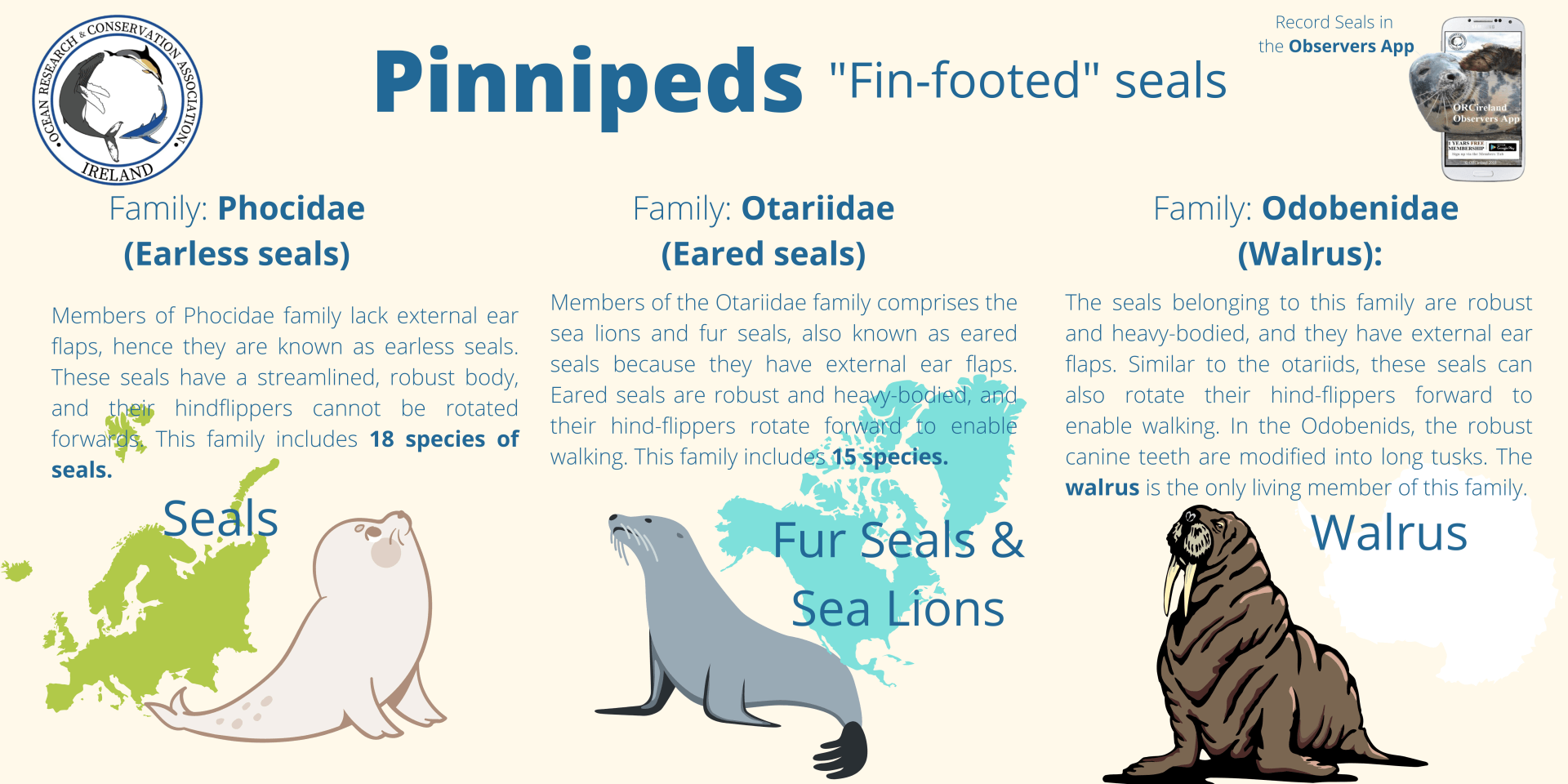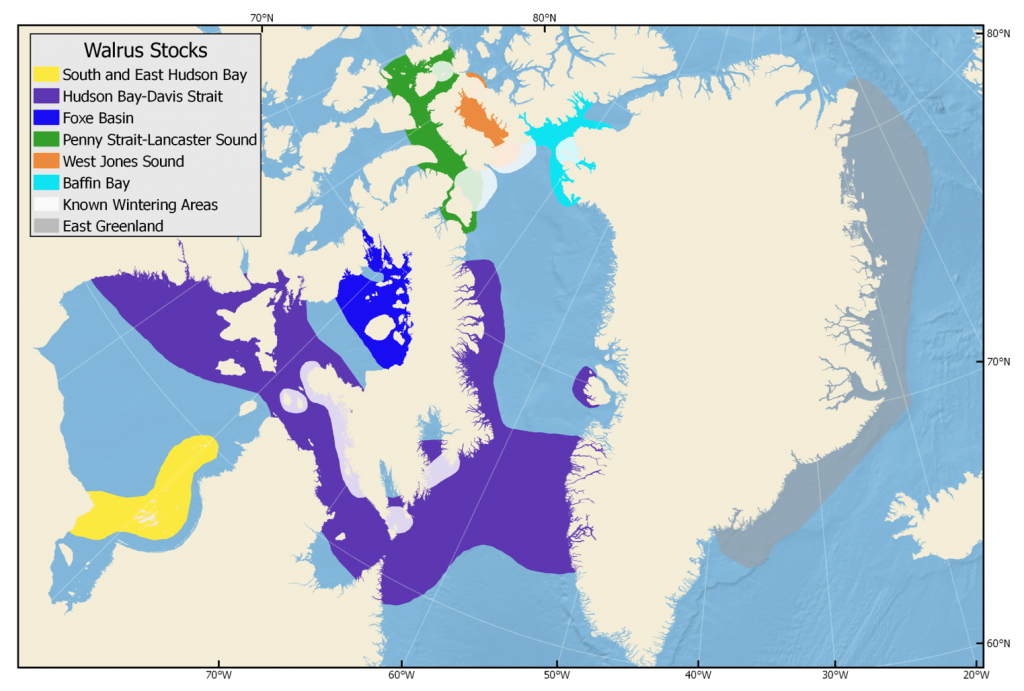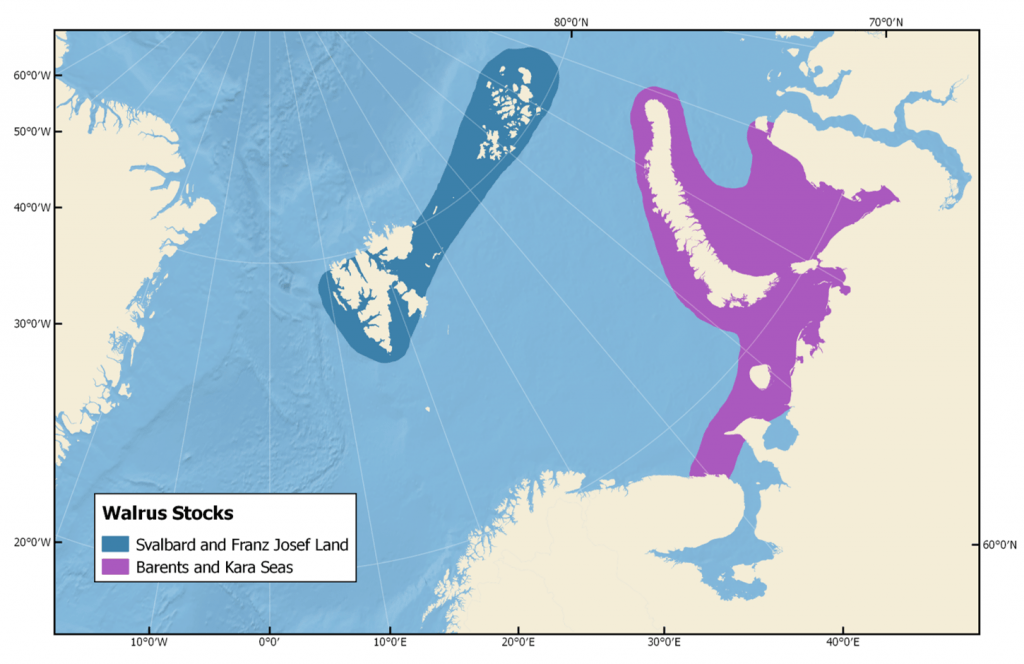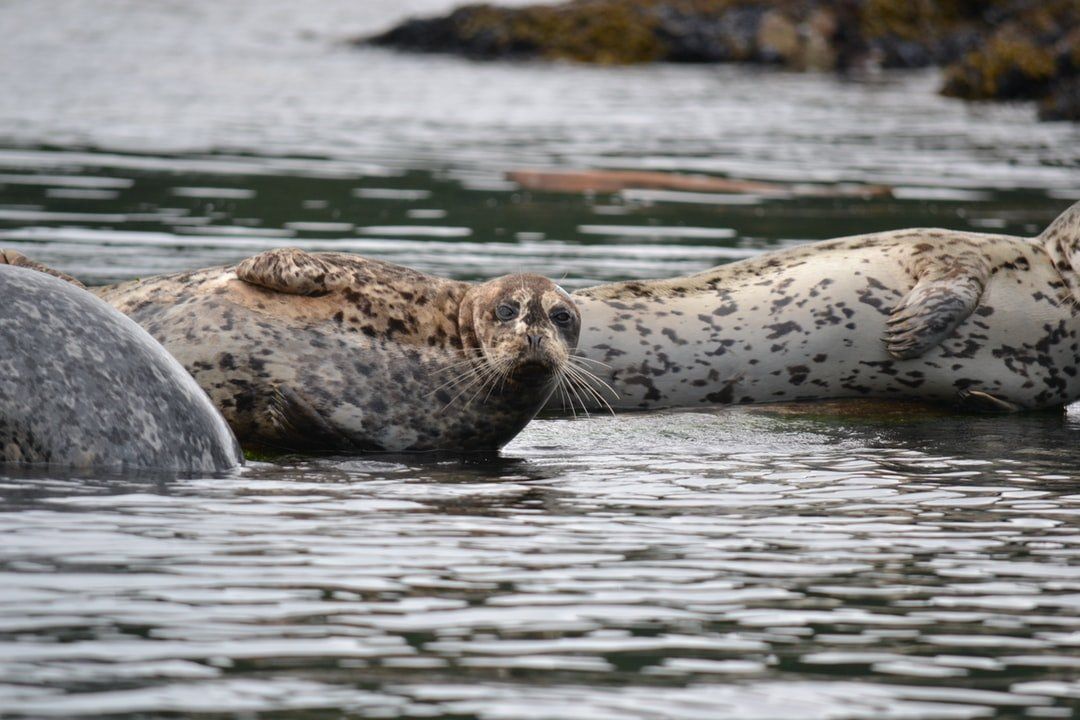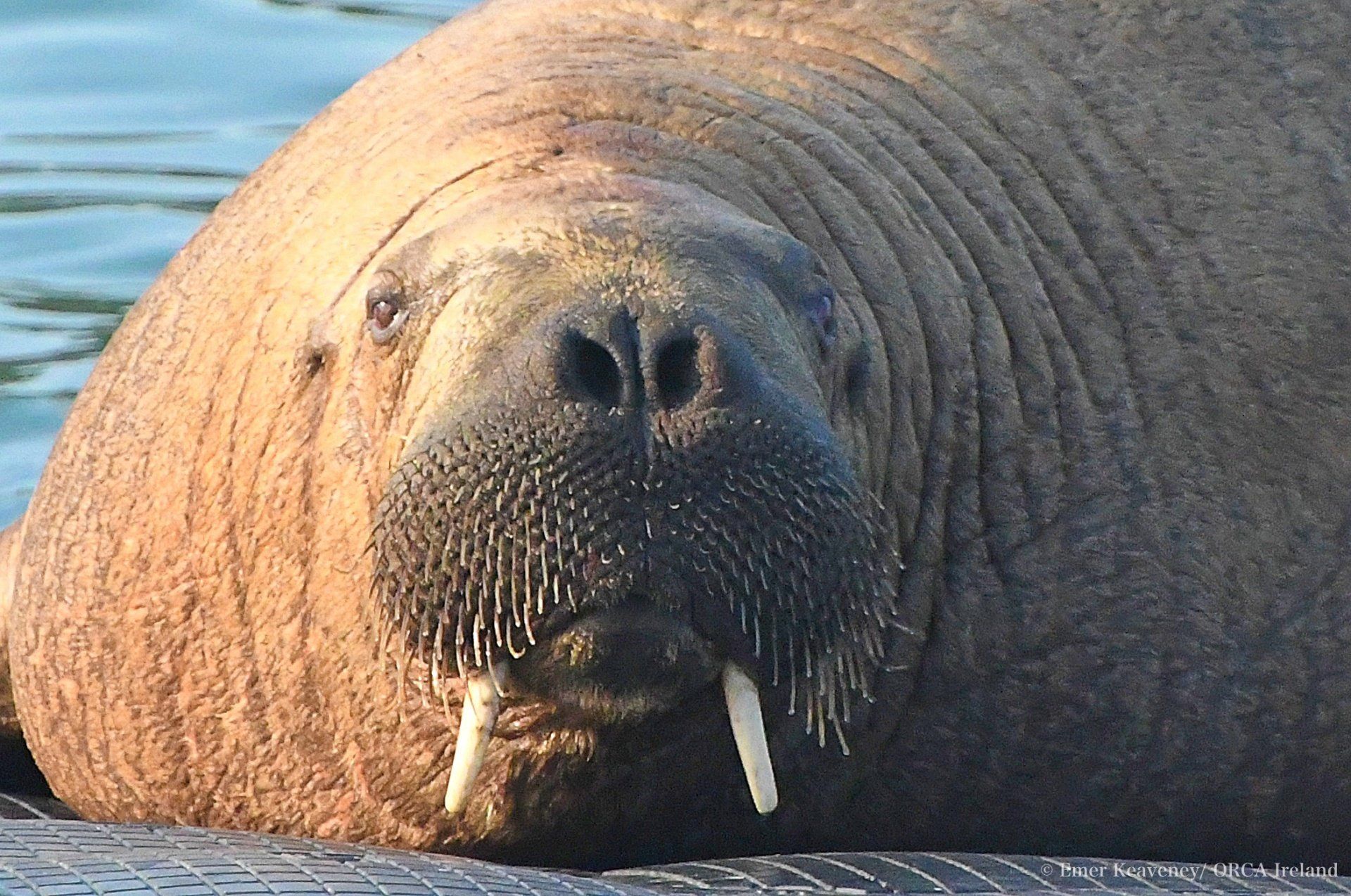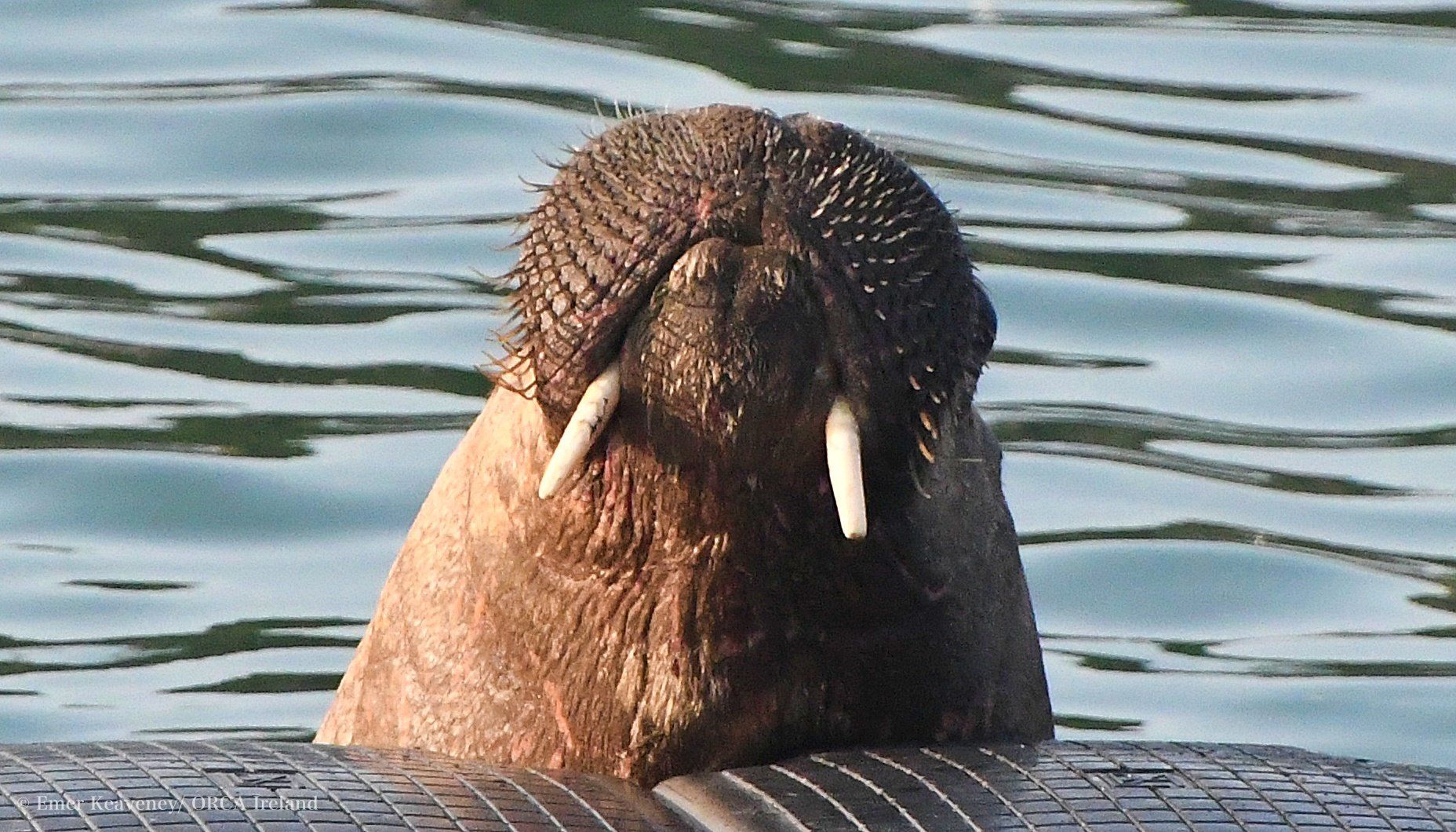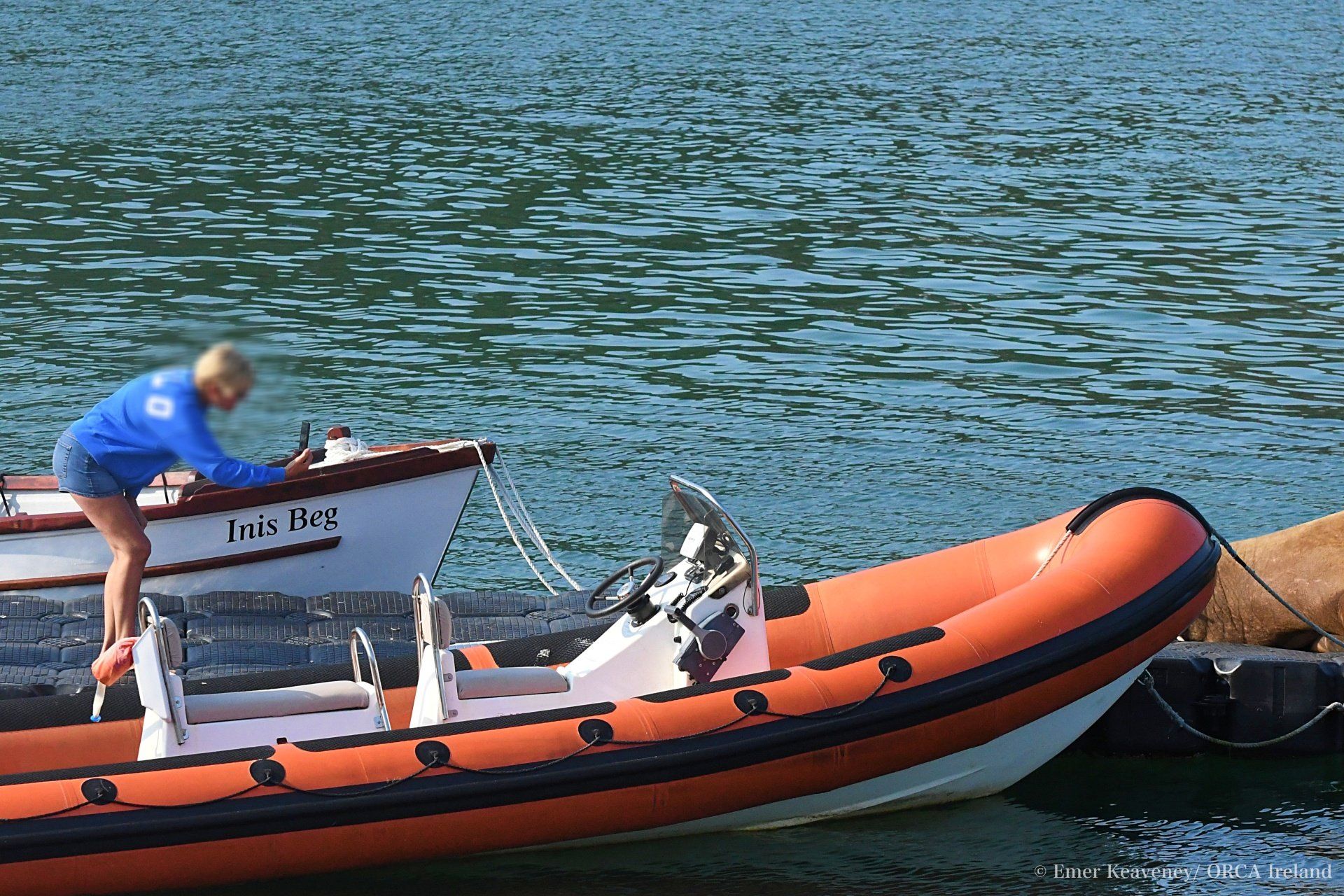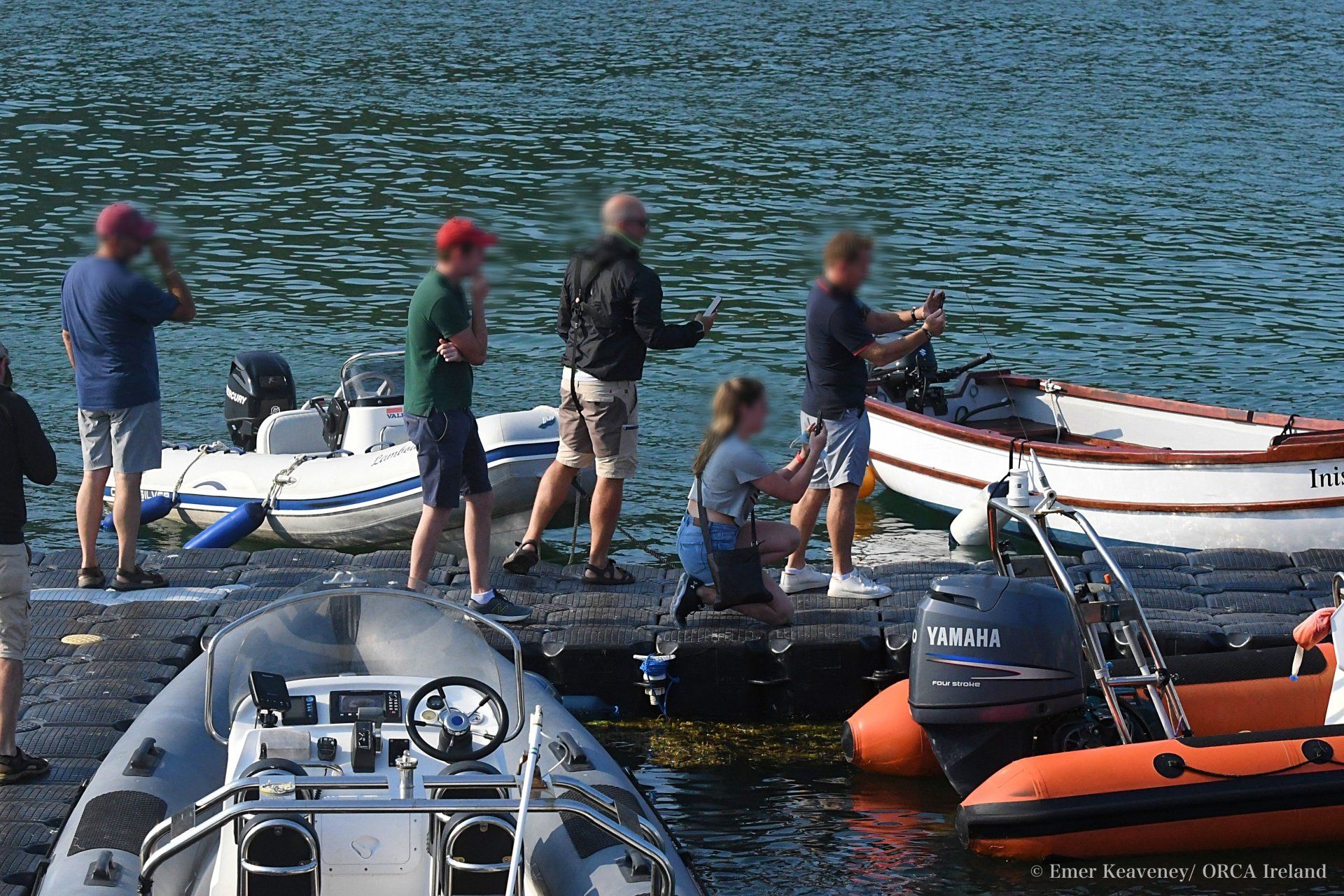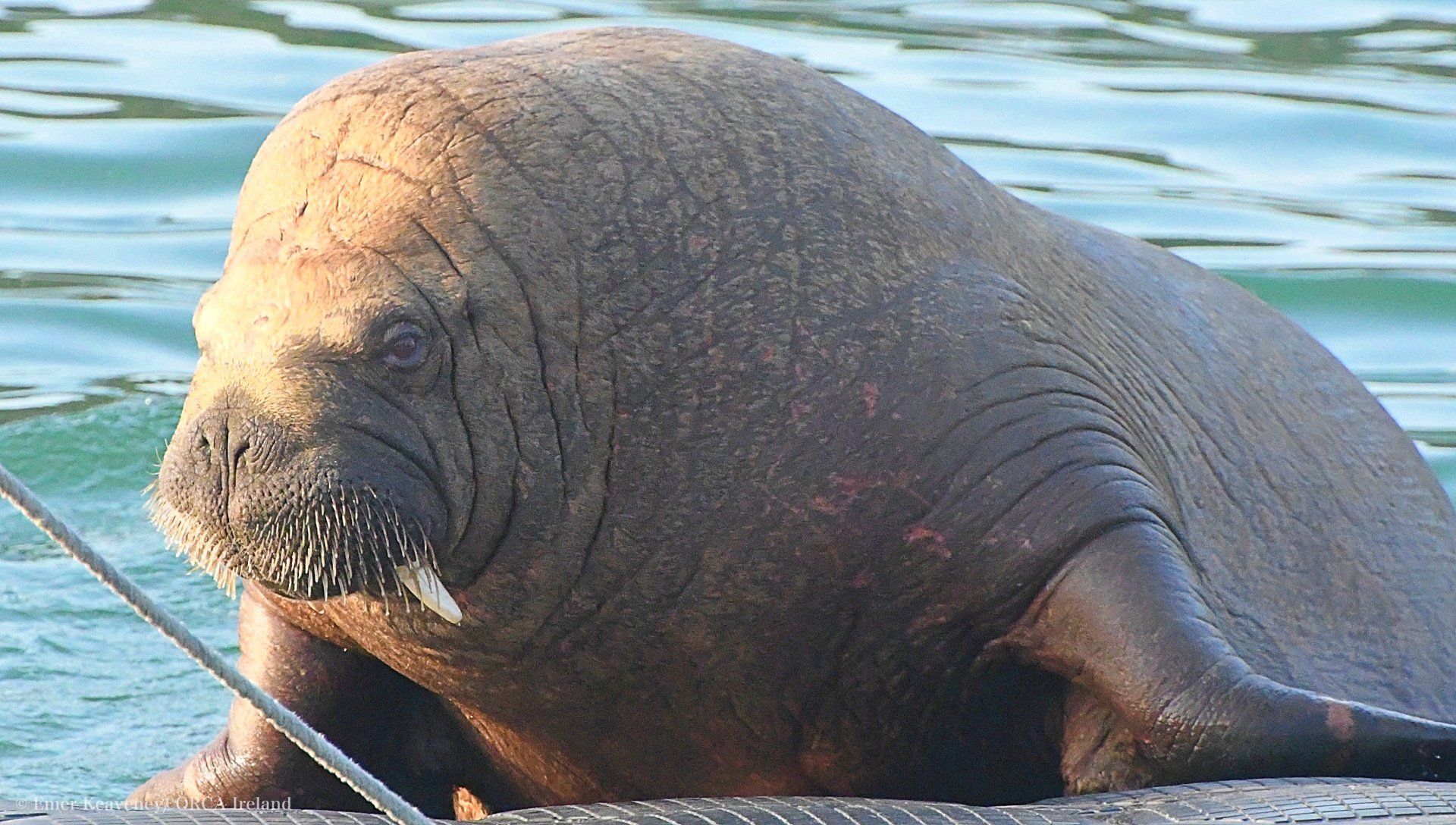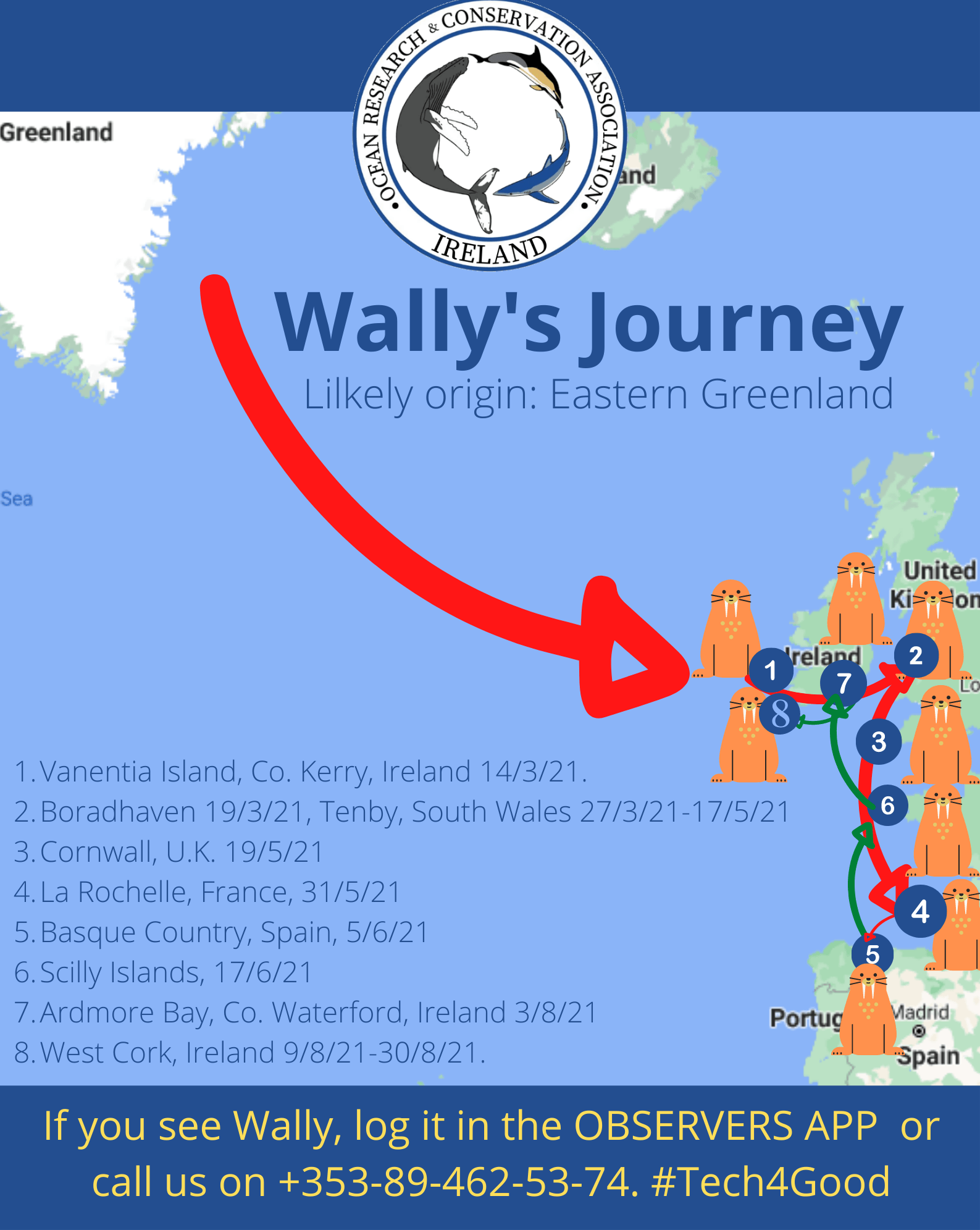Seal Vs. Walrus: What's the difference between "Wally" the walrus and a seal?
What's the difference between "Wally" the walrus and a seal?
Seals and walruses are marine mammals that share many similar physical features that may explain why they can be easily confused with each other. While there are similarities, there are also some substantial differences between seals and walruses that can be used to easily distinguish these marine mammals. For those who are interested in discovering the diversity and differences between seals and walruses, they can start by gaining an understanding of their scientific classifications, habitats, appearance, and dietary differences.
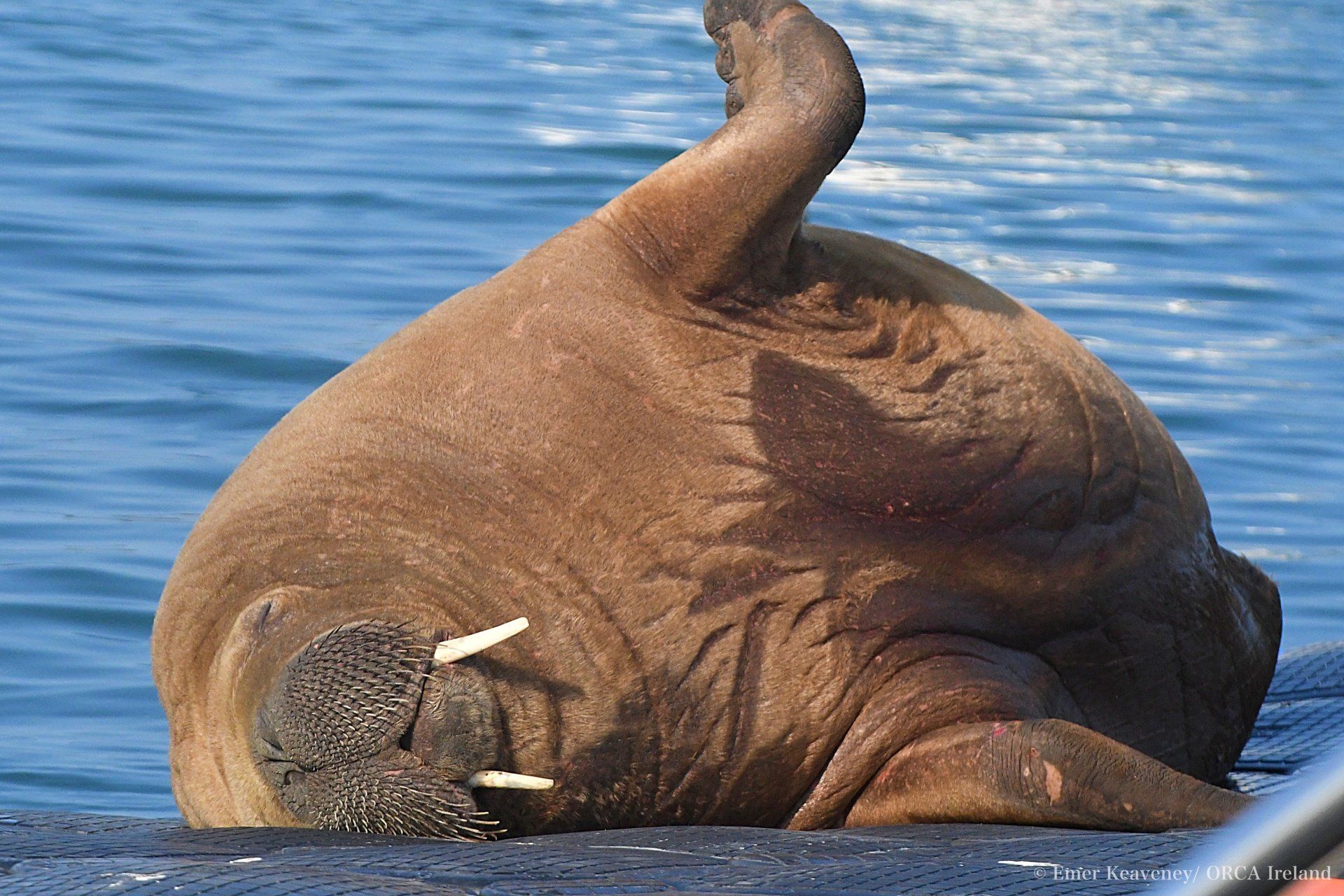
Scientific Classification:
The order Pinnipedia includes seals , sea-lions and walruses. Seals and walruses share similar fin-like flippers but are classified into different 'families', with walruses falling into the Odobenidea family and seals falling into either the Phocidae or Otariidae family. Earless, or "true seals", are part of the Phocidae family, while eared seals -- or fur seals and sea lions are part of the Otariidae family. The origin of the name “walrus” is uncertain, but it may be derived from the Old Norse word hrossval, meaning “horse-whale”.
Habitat:
Atlantic walruses range from the Canadian Arctic, across Greenland, Svalbard and the west of the Arctic Russia. There are 8 sub-populations of Atlantic walruses, based on their geographical distribution and movements (Born
et al., 1995). In west Greenland, five sub-populations occur, while there are 3 in eastern Greenland. Historically, walruses ranged from Sable Island, Nova Scotia to the Greater Gulf of St. Lawrence, in colonies of up to 8,000 individuals, however, commercial hunting severely depleted their populations, and the current estimate for the Atlantic walrus remains at most 30,000 individuals, with smaller more isolated populations occurring in the north-east Atlantic in eastern Greenland, Svalbard and the Barents and Kara Seas.
Walrus North Atlantic Stocks include:
1. Foxe Basin
2. Southern and Eastern Hudson Bay
3. Northern Hudson Bay-Hudson Strait-Southeast Baffin Island-Northern Labrador
4. Western Greenland
5. North Water (Baffin Bay-Eastern Canadian Arctic)
6. Eastern Greenland
7. Svalbard-Franz Joseph Land
8. Kara Sea-Southern Barents Sea-Novaya Zemlya
In 2017, research using satellite linked transmitters indicated an overlap in the ranges of all three of the previously proposed stocks in the high Arctic population which suggested that walruses occupying Smith, Jones and Lancaster Sounds in summer are potentially susceptible to hunting in Northwest Greenland and therefore that without further counter evidence to suggest discrete sub-stocks, a precautionary approach would be to manage the high Arctic population as a single stock (Heide-Jørgensen et al. 2020). This is currently referred to as the Baffin Bay stock.
In Greenland, three stocks of Atlantic walrus occur; the Baffin Bay stock, the West Greenland-Southeast Baffin Island “component” of the Hudson Bay-Davis Strait stock, and the East Greenland stock (Wiig et al., 2014). The three stocks have been distinguished based on genetics, distribution and migration patterns (Witting and Born, 2014). Two of these stocks, the Baffin Bay and the West Greenland-Southeast Baffin Island component, are shared with Canada.
Along the eastern coast of Greenland, walruses occur year-round and are mainly distributed inside the National Park of North and Northeast Greenland, north of the entrance to Scoresby Sound (about 71° N) (Witting and Born, 2014). There is very limited exchange between the East Greenland walruses and neighbouring populations, such as the West Greenland, North Water, and the Svalbard-Franz Land populations (Witting and Born, 2005).
A common stock of Atlantic walruses were recently found in the Svalbard and the Franz Josef Land archipelagos based on findings from studies of movement and genetics have shown that most of the males summer in Svalbard and most females and calves remain in north-eastern parts of Svalbard and the Franz Josef Land area (Wiig et al., 2014, Lydersen & Kovacs, 2014, Freitas et al., 2009). Only a single documented exchange of walrus from East Greenland to Svalbard (Born and Gjertz, 1993) has occurred this is likely and walruses from East Greenland and Svalbard-Franz Josef Land differ genetically and are distinct stocks (Wiig et al. 2014).
In general, walruses live on pack ice, although they may haul-out on rocky islands if ice is less available as temperatures increase. In comparison, seals are an extremely wide ranging group and can be found in arctic, and antarctic seas. Some seal species, including the harbour seal (Phoca vitulina), caspian seal (Pusa caspica), and Hawaiian monk seal (Neomonachus schauinslandi)- live in warmer temperate climates. The harbour seal, for example, can be found along the coastlines of southern California, Mexico, New Jersey to Ireland, Britain and France.
Physical Characteristics:
Walruses similar to seals, are rounded torpedo-shaped or, "fusiform" mammals , however different in that they have pink and brown wrinkled skin, long white tusks, and large, flat front and rear flippers with small, inconspicuous claws. Walruses are the third largest of the pinnipeds, after the two elephant seal species, varying in size from 2.3 metres to 3.5 metres, and may weigh as much as 1.5 tons or between 1,200 - 1,500 kg, the weight of a small car! Females are smaller, weighing around 600–700 kg and reaching lengths of 2.5 m.
Unlike eared seals, and similar to Phocids, walruses lack external ear flaps. Depending on their specific subspecies, seals may come in a variety of shapes that help them move through the water, have sharp carnivore teeth and front flippers that feature sharp, powerful claws. Unlike walruses, there are no types of seals that have tusks. Walruses, similar to otariids, can turn their rear flippers forward and move on all fours; however, their swimming technique is more similar to that of phocids, or true seals, in that they rely less on flippers and more on sinuous whole body movements.
Looking closely at a walrus you can see their eyes protrude, due to well developed extra-ocular muscles and lack of orbital roof, that allow the mammal to see in both a frontal and dorsal direction, although vision appears to be more suited for short-range.
Also, unlike seals, the walrus is not covered with fur and appears bald with highly wrinkled and thick skin, up to 10 cm around the neck and shoulders of males. Walruses blubber layer beneath the skin is also thicker, up to 15cm. Young walruses are deep brown and grow paler brown and more cinnamon-coloured as they age. Young walruses are deep brown and grow paler and more cinnamon-coloured as they age. Old males may become nearly pink and have often acquired secondary sexual characteristics in the form of significant nodules, called "bosses", around the neck and shoulders.
Diet:
A walruses impressive elongated canine tusks which are present in both male and female walruses and can reach a length of 1 m and weigh up to 5.4 kg, they are highly efficient bottom feeders, often preferring shallow shelf regions to forage primarily on the sea floor. As shallow divers they generally forage at depths of 30 metres but have been shown to reach depths of 500 metres. The walrus has a diverse and opportunistic diet, feeding on more than 60 genera of marine organisms, including shrimp. crabs, tube worms, soft corals, tunicates, sea cucumbers and various mollusks. Using their tusks, walruses dig out prey from the seabed, but analyses of abrasion patterns on the tusks indicate they are dragged through the sediment while the upper edge of the snout is used for digging. Generally, they have few rudimentary teeth numbering up to 38, but typically around 18.
Around the walruse's tusks, are a broad mat of stiff bristles, called "vibrissae", giving the walrus a characteristic whiskered appearance. There can be 400 to 700 vibrissae in 13 to 15 rows reaching 30 cm in length, though in the wild they are often worn down due to constant use in foraging. The vibrissae are attached to muscles and are supplied with blood and nerves, making them highly sensitive organs capable of differentiating shapes 3 mm thick and 2 mm wide.
Under its throat, the walrus has an air sac which acts like a floatation bubble and allows it to bob vertically in the water and sleep. The males also possess a large baculum (penis bone), up to 63 cm in length, the largest of any land mammal, both in absolute and relative to body size.
Life History:
Walruses can live up to 30 years in the wild, becoming sexually mature between 7- 15 years. Breeding occurs from January to March, peaking in February. Males aggregate in the water around ice-bound groups of oestrous females and engage in competitive vocal displays. The rest of the year (late summer and autumn), walruses form large aggregations of tens of thousands of individuals on rocky beaches or outcrops. The migration between the ice and the beach can be long-distance and dramatic.
Wally's Journey:
On the 14th of March 2021, ORCA Ireland received a report of a Walrus hauled-out on rocks on Valentia Island, Co. Kerry. Since he has travelled to Tenby, Wales, Cornwall, U.K., France and Spain and has been back in Ireland since early August. Unfortunately since his arrival, he has created quite a stir and has been subject to a substantially high level of disturbance from members of the public.
In response, ORCA Ireland are asking members of the public to follow our SeaSafe Whale & Wildlife Best Practices;
- Please stay a minimum of 100 metres distance from Wally.
- Do not make loud noises near Wally.
- Do not approach Wally by boat, kayak, or by any other means.
If you want to help protect Wally, then please sign our Petition to #ProtectALLPinnipeds in Irish waters, including Arctic vagrants. Wally is not the first, and likely wont be the last Arctic pinniped to venture into Irish waters. The latest IPCC report on Climate Change highlighted this important issue, however, with Wally on our door-step, the Climate Crises is something we must address immediately, starting with providing adequate protection for all marine mammals in Irish waters, including Arctic vagrant pinnipeds. Wally has enough on his plate without being harassed by people, so please help us to get legal protection for Arctic vagrant pinnipeds in Irish waters.
SHARE THIS ARTICLE






